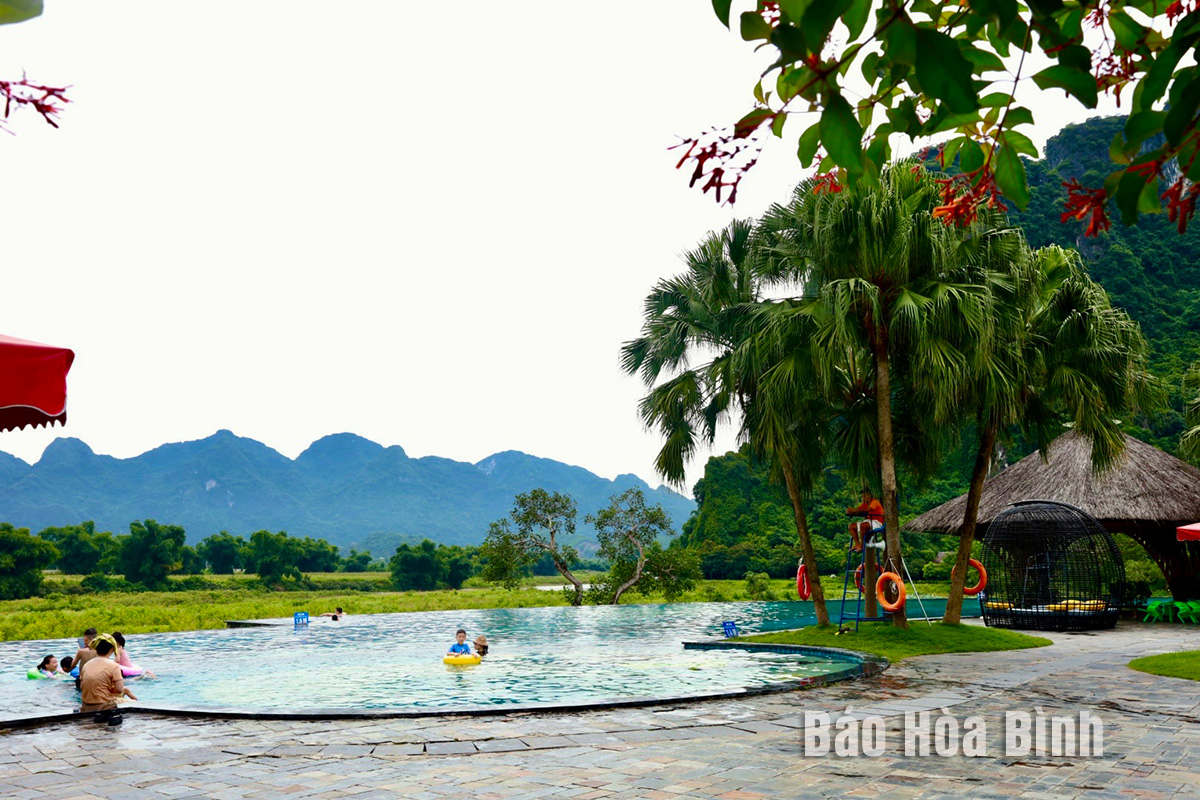
Thanks to the effective exploitation of natural landscape and the cultural diversity of ethnic minorities, Hoa Binh province has become an attractive destination for tourists seeking experiences and exploration.
The units, businesses, and families involved
in tourism are continuously renewing their products and improving service
quality to meet the demands and tastes of tourists interested in leisure
tourism, cultural exploration, and local cuisine...
In 2024, Hoa Binh province is estimated to
welcome over 4.3 million tourist arrivals, achieving 103.5% of the plan. Among
them, international tourists account for 510,000 arrivals, and domestic tourists
over 3.8 million arrivals.
Compared to the same period last year, the
total number of tourist arrivals to Hoa Binh province increased by 9.9%. In
2024, the total tourism revenue of Hoa Binh province is estimated to reach
nearly 4,740 billion VND, achieving 103% of the plan and increasing by nearly
18% compared to the same period in 2023.
A diverse chain of eco-tourism and resort destinations concentrated in Hoa Binh city and the districts of Tan Lac, Da Bac, and Luong Son… Along with the launch of several key high-quality resort tourism projects, these developments have reshaped the landscape and enhanced the appeal of Hoa Binh as a travel destination.
Boasting diverse terrain, a mild climate, and rich natural resources, Cao Phong district is increasingly asserting its place on Vietnam’s tourism map, attracting both domestic and foreign visitors. The district is renowned for its stunning landscapes, majestic mountains, a crystal-clear hydropower lake, and the unique cultural identity of local ethnic groups.
With its pristine landscapes, unique cultural heritage of Muong ethnic minority, and an expanding range of visitor experiences, Tan Lac district of Hoa Binh has fast become a captivating destination for both domestic and international tourists.
Until now, Sung village in Cao Son commune, Da Bac district remains the only Dao ethnic community in Hoa Binh province to develop a community-based tourism model. Beyond its untouched natural landscapes, cultural identity serves as the cornerstone attraction for visitors.
Alongside the diverse cultural identities of the Kinh, Muong, Tay, Thai, Dao, and Mong ethnic people, Hoa Binh province is also renowned as the "capital" of the northwestern Vietnamese cuisine, offering unique and distinctive dishes. At festivals, during Lunar New Year (Tet), or on significant family or community occasions, special dishes are prepared, leaving a lasting impression on visitors.
A Phong Linh (Yellow Tabebuia) flower garden in Thang village, Thach Yen commune, Cao Phong district is currently in full bloom, drawing a large number of visitors.


